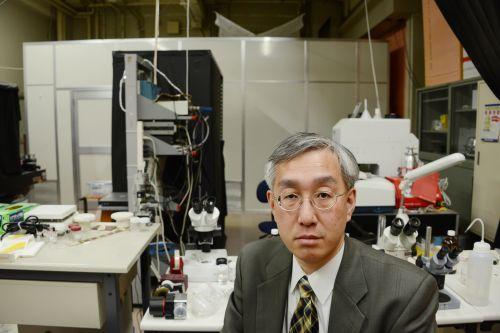Research News
Molecular mixing—the key to efficient solar cell energy conversion Shedding light on the nanostructures of organic solar cell materials

Using soft X-ray microscopy to investigate the nanostructures of organic solar cells, a research group led by of researchers, made up of Professor Yutaka Moritomo and Associate Professor Takeaki Sakurai from the Faculty of Pure and Applied Sciences, University of Tsukuba; Senior Researcher Takeshi Yasuda of the Photovoltaic Materials Unit, National Institute for Materials Science; Associate Professor Kanta Ono, Associate Professor Kazuhiko Mase, and Assistant Professor Yasuo Takeichi of the Institute of Materials Structure Science, High-Energy Accelerator Research Organization (KEK), Professor Yoshio Takahashi of the Faculty of Science, Graduate School of Science, Hiroshima University; and Yoshida Yuji of the Research Center for Photovoltaic Technologies, National Institute of Advanced Industrial Science and Technology (AIST); have used soft X-ray microscopy to investigate the nanostructures of organic solar cells, and have discovered that molecules are mixing within their respective molecular domains. This discovery clarifies the energy conversion mechanism for organic solar cells, and could lead to the formation of design guidelines for high-efficiency organic solar cells.
Bulk heterojunction organic solar cells are known for their characteristically high energy conversion efficiency. Up until now, a clean interface between polymeric materials and the monomolecular domains of fullerenes has been considered important in increasing efficiency for batteries. However, as a result of using the new method of soft X-ray microscopy to examine the domain structures of samples in which conversion efficiency had been optimized, the researchers found that the molecules in the respective domains were mixed together. In other words, the researchers learned for the first time that an interface that was instead "dirty" had superior performance as a battery, a result that overturns conventional knowledge on the subject.
These study results were made available to the public on April 16 in the online edition of the journal Applied Physics Express, published by the Japan Society of Applied Physics.



